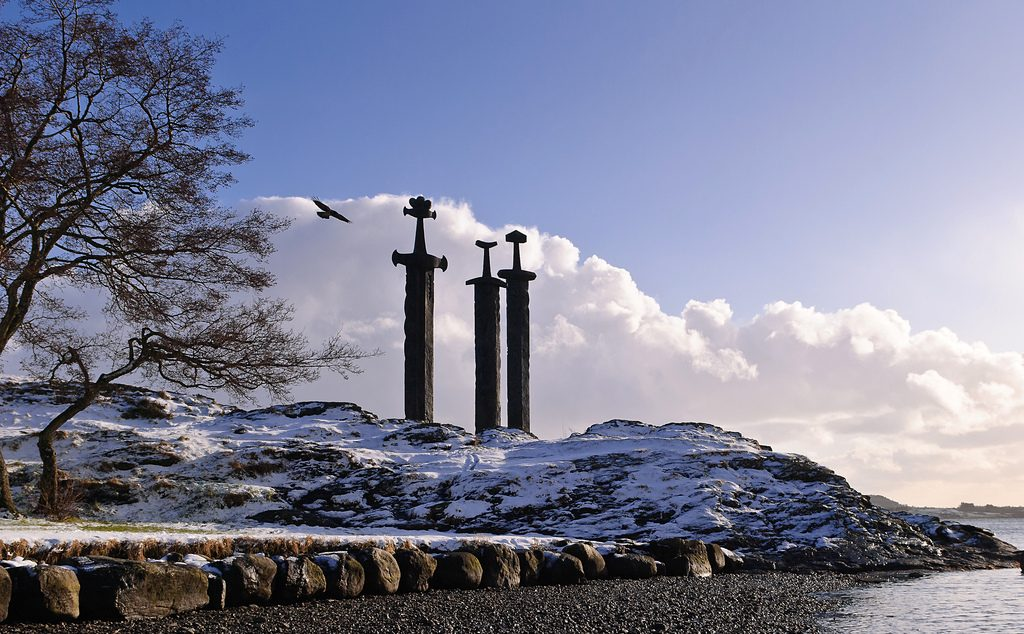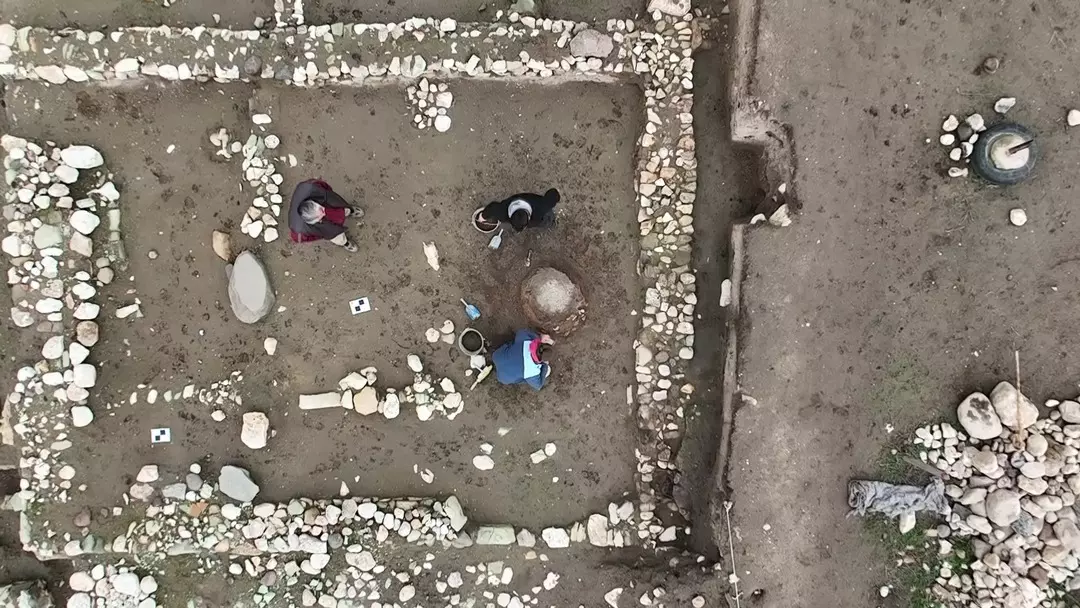In the annals of Norwegian history, few moments shine as brightly as the unification of Norway under the rule of King Harald Fairhair. This historic event, symbolized by the iconic Sverd i Fjell (Swords in Rock) monument, tells the tale of an eight-year-long campaign that culminated in the legendary Battle of Hafrsfjord.
It was here, around 880 AD, that King Harald faced off against the last remaining independent Viking kings and brought an end to the era of fragmented clans and rival chieftains.
The Ambition of Harald Fairhair
Harald Fairhair, also known as Harald Hårfagre, was driven by a bold vision: to unite the numerous and often warring Viking kingdoms of Norway under a single ruler. Before his rise, Norway was divided into numerous petty kingdoms, each ruled by powerful local chieftains or minor kings. These smaller realms were frequently at odds, engaging in raiding, skirmishing, and power struggles that fragmented the nation.
A statue of Harald Fairhair, the first king of Norway (c. 850 – c. 932 AD). The statue was erected in 1872 AD, at the Haraldshaugen monument in Haugesund, Norway.
Legend has it that Harald’s desire to unify Norway was inspired by his love for Gyda, a princess from Hordaland. When Harald proposed to her, Gyda reportedly responded that she would only marry him if he became the sole ruler of all Norway. Determined to win her hand, Harald swore an oath not to cut or comb his hair until he had achieved this monumental goal. For ten long years, his hair grew wild as he set out on a mission to conquer the Viking lords and bring the country under one banner.
The Battle of Hafrsfjord: A Defining Moment
By 872 AD, Harald had already subdued many of the rival kings, but there were still pockets of resistance. The most significant threat to Harald's ambition came from a coalition of powerful Viking kings who controlled various parts of western Norway. They refused to submit to Harald’s rule, and the conflict culminated in the Battle of Hafrsfjord, fought around 880 AD.
The Battle of Hafrsfjord, which took place near modern-day Stavanger, was a fierce and decisive conflict. Harald’s forces clashed with a large alliance of Viking rulers who had banded together in a last-ditch effort to resist his unification efforts. The battle is believed to have been fought on both land and sea, with longships converging on the fjord’s waters and warriors engaging in brutal hand-to-hand combat on the shores.
Despite the strength of his opponents, Harald’s forces emerged victorious. The defeat of the opposing kings marked the end of significant resistance to his rule, and in the aftermath of the battle, Harald Fairhair was recognized as the first king of a united Norway. This momentous victory consolidated his control over the entire region and ushered in a new era of Norwegian history.
The Sverd i Fjell Monument: A Testament to Peace, Unity, and Freedom
To commemorate the unification of Norway and the significance of the Battle of Hafrsfjord, the Sverd i Fjell monument was erected in 1983. Located on the shores of Hafrsfjord, near Stavanger, this awe-inspiring monument consists of three enormous bronze swords embedded in solid rock. The towering swords, standing at over 10 meters tall, are not only a powerful reminder of Norway's martial past but also a symbol of peace, unity, and freedom.
The hilts of the swords are replicas of Viking weapons from the era of Harald Fairhair, each meticulously crafted to reflect the design and craftsmanship of the time. However, while the swords are an homage to the battles and bloodshed that led to Norway’s unification, their placement in the rock carries a deeper meaning. The swords are embedded in stone to symbolize that these wars are over and that the peace forged by Harald’s victory is everlasting.
Each sword represents a different value:
The largest sword symbolizes the might and power of King Harald, who unified the clans and brought the disparate kingdoms together under his rule.
The second sword represents the Viking kings who were defeated and their submission to Harald’s reign, bringing an end to the era of constant warring.
The third sword stands for peace, symbolizing the unity and stability that followed the brutal conflict and the establishment of Norway as one kingdom.
Today, the Sverd i Fjell monument is not only a significant historical site but also a popular tourist attraction, drawing visitors from around the world to marvel at its grandeur and the powerful story it tells. It serves as a reminder that the freedoms and unity enjoyed by modern Norway were hard-won through courage, determination, and sacrifice.
King Harald’s Legacy: The Father of Norway
Harald Fairhair’s unification of Norway had a profound and lasting impact on the nation’s history. His victory at Hafrsfjord laid the foundation for the establishment of the Norwegian monarchy, and he is often referred to as the "Father of Norway." Under Harald’s reign, the kingdom grew more centralized, and the Viking Age continued to flourish, with Norwegian warriors, traders, and explorers setting out across the seas.
Harald himself went on to rule for many years after the battle, eventually passing the throne to his descendants, establishing a royal lineage that continues to this day. His legacy lives on not only in the annals of history but also in the cultural consciousness of Norway.
Conclusion: A Monumental Chapter in Norwegian History
The story of King Harald Fairhair and the Battle of Hafrsfjord is one of ambition, conflict, and ultimate unity. The Sverd i Fjell monument stands as a timeless tribute to this defining chapter in Norway’s past, representing the transition from a fragmented land of warring clans to a united kingdom under one ruler. It is a symbol of the peace, freedom, and unity that came from the struggles of Harald Fairhair’s time, a reminder that even the hardest-fought victories can lead to enduring peace.
For Norwegians and visitors alike, the monument at Hafrsfjord offers a glimpse into the nation’s Viking heritage, a time when warriors roamed the seas and kings battled for supremacy. It reminds us that, while the days of Viking conquest may be long gone, their legacy lives on in the heart of Norway’s history and culture.











